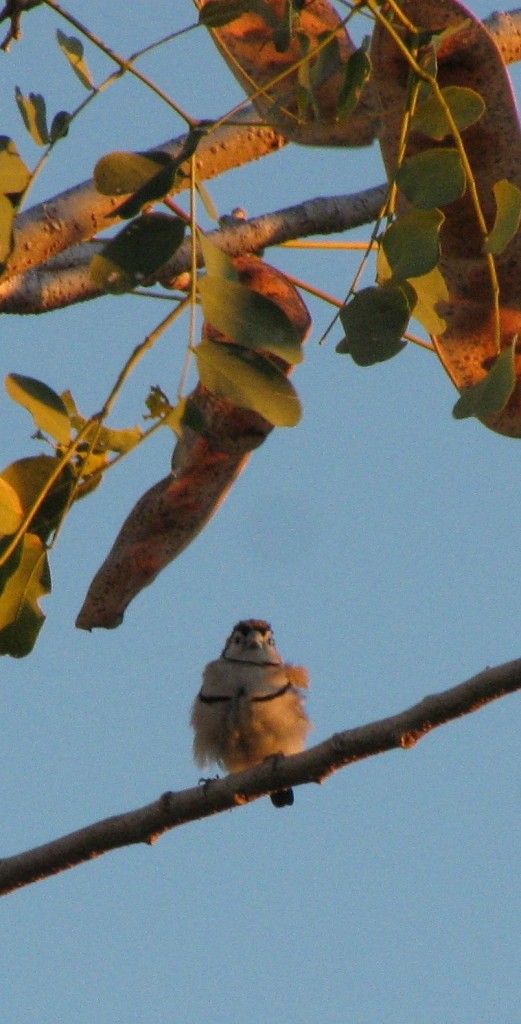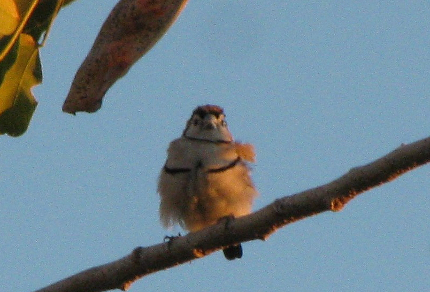In late afternoon, a flock of straw-necked ibises and a single Australian white ibis foraged on the golf course. The club’s grass is still sodden from heavy rains two days ago that fell in fits and starts throughout the day. The precipitation had lessened into faint mist by early evening, and then pounded down in astonishing fury during the night and into yesterday. Now again, all is sun and clear winter sky.
Weary from sitting too long at my writing desk and needing to observe something more concrete than words, I strolled into Bicentennial Park. The Ross River snaked between broad sandspits. Two Pacific black ducks waded at its edge. A fish splashed silver water at their feet. The bed of sand behind them was a desert sculpted by tide and current. A Brahminy kite flapped and glided over the river, its white head and chest searingly white in the light of the setting sun.

Double-barred Finch in ‘Rattle’ Tree (© Magi Nams)
Loathe to leave the peace of the park and river, I walked on, past a tree with yellow seed pods burnished by the sunset. Past a tiny double-barred finch murmuring faint cheeps as it flew among hanging pods of pounded gold that shivered and spoke like a thousand papery rattles. Crickets performed their peaceful melodies of winter less harried than those of summer. I kicked through coarse, dead leaves beneath a fig tree still retaining a few pear-shaped scoops of red and dark green. The sound under my feet was harsh and crunchy. No fragile, easily crumbled maple leaves, these. Instead, they spoke of a hardiness needed to survive this environment. When I looked at the fig, I realized I was wrong about Australia lacking the flaming colours of autumn to which I am so accustomed in eastern Canada. Here, I see no hillsides blazing with orange or lit with red embers; rather random coals burn against a backdrop of muted green and the insidious brown creeping into the winter landscape.

(© Magi Nams)


